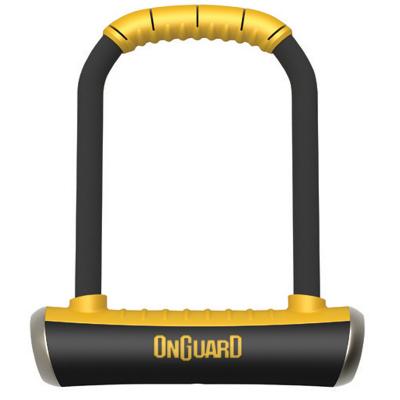E-Bikes and traditional bicycles represent a sizeable investment and naturally it pays off to keep your ride secure. There are so many locks at so many price points on the market, it can be hard to figure out where to start, so we are here to take a closer look.
One of the worst things you can do is purchase a poor quality lock for a few bucks and expect it to offer any reasonable degree of security - it won't. You also have to be mindful of how you use your lock and make sure you always lock it through the frame of the bike. I am sure you have all seen bike wheels locked to something, while the rest of the bike is gone - as illustrated above.
On that note, it is also very important to consider what it is you are locking your bike onto. Using a wire fence or a rusty pipe for an anchor point won't help much if they can be compromised. Even official bike bays and locking posts come in varying degree of toughness, so it pays off to give it a bit of an inspection prior to locking up. As a rule of thumb it's a good idea to lock your bike onto something tougher than the lock itself. If you are locking two bikes together, never lock the second bike to the frame of the first bike as modern alloy frames can be cut in no time at all, which means you'll end up with one stolen bike and one with a chewed up frame. Locking your bike to a short post may allow thieves to simply lift the bike off the pole, even if it means standing on a car roof or a UTE tray.
There are two main security considerations for the lock itself - how tough is the lock to resist physical abuse and how easily can the lock be picked. For the most part it's the physical security that matters the most. Chain locks with beefy padlocks and hardened chains are usually considered to offer you the highest levels of theft protection. Chains with hexagonal cross section links are usually the strongest as the use of bolt cutters is more difficult due to the force being applied to a flat surface. These types of locks are usually heavy, because that's the only way to make a strong locking system. If you, for example, commute to work on your bike then you might consider keeping one there so that you don't need to haul it around. The OnGuard Beast is an extremely robust lock and the mere sight of it will discourage most bike thieves to look for lower hanging fruit - and those who decide to make a go of it will have a fight in their hands.

So called D-Locks or U-Locks can also offer high levels of security, but come at a lower weight and can often be mounted on the bike frame, making them easy to carry. A good D-Lock, together with a chain or a chunky wire lock to secure wheels is a good idea. With many modern bikes having quick release wheels it pays off to secure them too. D-Locks also come in many price points and getting one from a Two Dollar Shop to protect your pride and joy might not be such a good idea. Cheap D-Locks can be compromised with hacksaws or bent open with metal poles, so hardened steel is the way to go, even if it's not the cheapest option.

Folding plate locks have also become popular as they pack into a small space and can often also be mounted on bicycle and electric bike frames for easy carrying, yet they offer close to D-Lock level of security. They are available in various lengths to ensure you can easily lock your bike. Always make sure your plate lock has recessed pins to combat attacks with bolt cutters. The ETook and OnGuard range of plate locks are very popular and sufficient in most circumstances. All current Dyson E-Bikes (with the exception of our 20" model) have factory mounting points at the back of the seat post tube for attaching plate lock mounts. This is a very convenient way to carry your lock and making sure it is always with you.
For general extra security, you also need to consider things like removing your seat if it's on a quick release as some thieves can stoop that low - and it's no fun pedalling back home with no seat. Lights should be removed if parking your bike for an extended period of time. It's also a good idea to secure your bike as tightly as reasonably possible, so it is more difficult to jam something like a steel pole between the bike and the anchor point to attempt a brute force attack.
The actual core of the lock is made up of the locking cylinder and the key mechanism, which is effectively the gate-keeper to keep the lock locked. The fact of the matter here is that reputable lock manufacturers, such as OnGuard and ETook have better key mechanisms than 'no brand' locks, which can be forced open even without special lock picking tools or skills - some with a mere screwdriver. Seeing as a good lock is something that you can use from one bike to the next, it really pays off to get it right the first time and make sure you get a lock that keeps your bike where you left it.
To see our full range of bike locks, click right HERE.